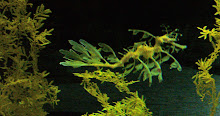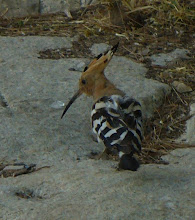Good morning and Welcome (back) to Weirdbeautiful.
Things have been a little quiet on this blog for the past couple of weeks because I have been busy writing a new book and finishing off a coffee-table book of botanical photographs. The new book- "Demons and Jellyfish" is an anecdotal popular science book about the 10 years I spent studying animals across 19 countries and 4 continents. It is- loosely- written in the style of Dan Walsh/Gervasse Phinn/ David Feinberg/ David Sedaris et al. The photobook is a short coffee-table book called "Where Flowers Bloom". It is a mixture of calming pictures and loosely philosophical quotes by famous people- mostly about relaxation, flowers, happiness and life in general. I will post more information about both books on this blog when they are finished/ published, respectively*.
One of the creatures that comes up, in the "Demons and Jellyfish" book, in the chapter on California, is the Banana slug, Ariolimax spp. -the lurid yellow mollusc in the picture above. This strange beast is actually the mascot of the University of California in Santa Cruz. This morning, I was given a copy of "Freaky Phenomena"
One of the other amusing (or disturbing, at any rate) entries in the "Freaky Phenomena "
"[The] fake tongue louse....is a parasite that lives in the rose snapper fish. It gets into its host's mouth, eats away the tongue and then sits in its place, pretending to be the fish's own tongue and feeding on particles of food the fish catches."
Wikipedia offers some more information on the fake tongue louse-
"This parasite enters through the gills, and then attaches itself at the base of the spotted rose snapper's (Lutjanus guttatus) tongue. It extracts blood through the claws on its front, causing the tongue to atrophy from lack of blood. The parasite then replaces the fish's tongue by attaching its own body to the muscles of the tongue stub. The fish is able to use the parasite just like a normal tongue. It appears that the parasite does not cause any other damage to the host fish. Once C. exigua replaces the tongue, some feed on the host's blood and many others feed on fish mucus. This is the only known case of a parasite functionally replacing a host organ." (-full article [here])
I'd like to link to the original scientific paper that first described this behaviour, but, unfortunately, it is held by JStore, who sell the rights to view the article. The reference is "Tongue Replacement in a Marine Fish (Lutjanus guttatus) by a Parasitic Isopod" by Richard C. Brusca and Matthew R. Gilligan and it was published in "Copeia" Vol. 1983, No. 3 (Aug. 16, 1983), pp. 813-816
-------------------------------------------------------------------
*If you want advance notification, you can join the book notification mailing list by sending an e mail to mail@victorianeblik.com- with the title of the book you want information on in the subject line. Your e mail will not be passed on or sold to third parties or otherwise abused: we hate spam as much as you do.









No comments:
New comments are not allowed.